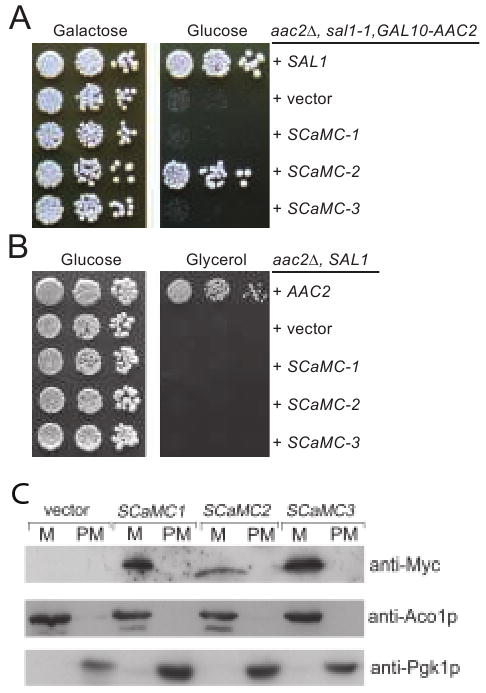Fig. 7.

Expression of human SCaMC-1, -2 and -3 in yeast. (A) SCaMC-2 suppresses lethality in cells inactivated for both SAL1 and AAC2. Serial dilutions of CS494-2B (aac2Δ, GAL10-AAC2, sal1-1) expressing SCaMC-1, -2 and -3 from the ADH1 promoter were spotted onto YPGal and YPD. (B) SCaMC-1, -2 and -3 are unable to complement the respiratory deficiency of aac2 mutant. CS341 (aac2Δ, but SAL1) cells expressing SCaMC-1, -2 and -3 from the ADH1 promoter were diluted in water and spotted on YPD and YPG. Plates were incubated for five days at 30°C before being photographed. C. The expression levels and mitochondrial targeting of Myc-SCaMC-1, Myc-SCaMC-2 and Myc-SCaMC-1 in yeast. Yeast transformants expressing the human genes from the ADH1 promoter were grown in YPD and fractionated into mitochondrial pellet (M) and post-mitochondrial supernatant (PM). Proteins were separated by SDS-PAGE and immunobloted with the anti-Myc antibody. The Aco1 and Pgk1 proteins were used as markers for mitochondrial and cytosolic proteins respectively.
